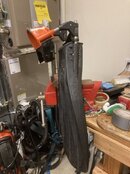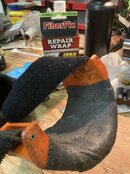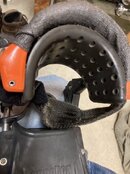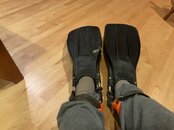David Wilson
Contributor
Thank you for the positive feedback, JMBL. As for books about fins, you are right that such equipment receives undeservedly scant attention in diving manuals both ancient and modern. When it comes to fin monographs, it all depends what you are looking for in such publications. If you are looking for a history of fin development, read the three-part series "A short history of fins" by @Sam Miller III published in Historical Diver No. 3 Summer 1994, No. 4 Spring 1995 and No. 5 Summer 1995.
If I am after fin specification and performance criteria, I turn to my copy of "Comparative evaluation of swim fins" by W. G. Fischer at the Navy Experimental Diving Unit (Washington, D. C. 1 March 1957), which can be downloaded from https://apps.dtic.mil/sti/pdfs/AD0780665.pdf. Yes, it's more than 60 years old and the fins the author reviewed were discontinued long ago, but it's a thorough piece of work and the benchmarks used apply just as much to today's fins as yesteryear's. By way of example, he criticises mid-1950s manufacturers for the vagueness of their descriptions when it comes to defining fin material. I once came across a modern manufacturer's boast that his fins were made from "space-age materials" without elaborating on what they were. Plus ça change, plus c'est la même chose !
You might also contact French-Canadian Yves Clercin, whose Facebook page is at Yves Clercin. He has researched fin development in depth, including the patent travails of their modern inventor Louis de Corlieu.
Keep your eyes open too for "fin roundups" in diving magazines if you want to stay ahead of the game in modern fin science and technology. You have already hinted at one fin-specific problem by drawing a distinction between "swimming" and "diving" fins. Fins have indeed become much more specialised lately, claiming as they often do to serve a single function such as freediving, underwater hunting, snorkelling, scuba diving, swim training etc, while mid-twentieth-century fins were "universal" devices designed to be used in a whole range of aquatic settings and activities because money was so much scarcer back then and most people could only afford to buy a single pair.
If I am after fin specification and performance criteria, I turn to my copy of "Comparative evaluation of swim fins" by W. G. Fischer at the Navy Experimental Diving Unit (Washington, D. C. 1 March 1957), which can be downloaded from https://apps.dtic.mil/sti/pdfs/AD0780665.pdf. Yes, it's more than 60 years old and the fins the author reviewed were discontinued long ago, but it's a thorough piece of work and the benchmarks used apply just as much to today's fins as yesteryear's. By way of example, he criticises mid-1950s manufacturers for the vagueness of their descriptions when it comes to defining fin material. I once came across a modern manufacturer's boast that his fins were made from "space-age materials" without elaborating on what they were. Plus ça change, plus c'est la même chose !
You might also contact French-Canadian Yves Clercin, whose Facebook page is at Yves Clercin. He has researched fin development in depth, including the patent travails of their modern inventor Louis de Corlieu.
Keep your eyes open too for "fin roundups" in diving magazines if you want to stay ahead of the game in modern fin science and technology. You have already hinted at one fin-specific problem by drawing a distinction between "swimming" and "diving" fins. Fins have indeed become much more specialised lately, claiming as they often do to serve a single function such as freediving, underwater hunting, snorkelling, scuba diving, swim training etc, while mid-twentieth-century fins were "universal" devices designed to be used in a whole range of aquatic settings and activities because money was so much scarcer back then and most people could only afford to buy a single pair.








